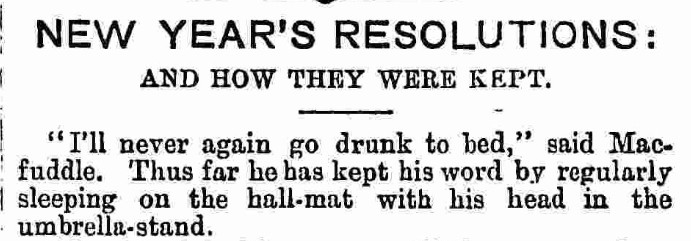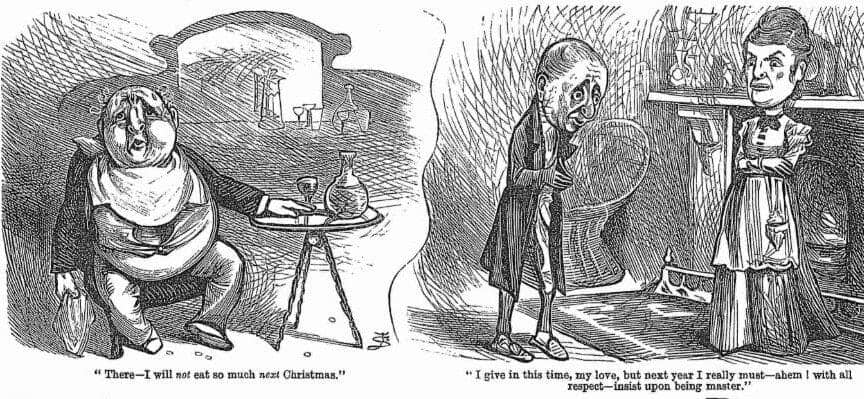│By Maya Thomas, Gale Ambassador at the University of Oxford│
‘This time next year, I’ll be healthier!’ ‘I’m finally going to finish writing my novel!’ As the Christmas cheer fades, and the dull, guilty feelings of overeating, overspending and oversleeping start to set in, New Year’s resolutions such as these seem to make their appearance in every conversation we have. In those cold, quiet last days of December, our attention turns from the nostalgic traditions of Christmas to the promise of newness and change on New Year’s Eve.
After all, ‘new year, new me,’ right?
But how long has this tradition of New Year’s resolutions been going on for? And how faithful were our ancestors to the New Year’s challenges they set themselves? I took to Gale Primary Sources to find out.
The first thing that surprised me when I simply searched for ‘New Year’ is that the word ‘resolution’ appeared as a related term immediately, providing me with my first insight into the prevalence of New Year’s resolutions as a tradition throughout the centuries.

I thought it was especially fitting that Victorian newspapers, printed in a historical context of huge industrial and social change, appeared to be highly interested in covering people’s attitudes towards the dawn of the New Year. Most of Gale’s late nineteenth-century newspapers published around the end of December or the beginning of January contained at least a small section commenting on the transition from one year to another. What was more unexpected to me however, was how sceptical many of them were. Cartoons in Fun UPK, for instance, a publication in Nineteenth Century U.S. Newspapers, sarcastically comment on the futility of New Year’s resolutions as a result of people being stuck in their ways, and a vast number of papers including the Yenowine’s Illustrated News and Funny Folks , both in 19th Century UK Periodicals, have entire articles devoted to lists of ironic resolutions.
!["SOME NEW YEAR'S RESOLUTIONS." Fun [UKP], 3 Jan. 1877, p. 12. 19th Century UK Periodicals](http://blog.gale.cengage.co.uk/wp-content/uploads/2019/01/Replacement.jpg)

Reading these, I couldn’t help but laugh and be amazed at how much I related to the scepticism of these pieces myself. I personally am not a great fan of the hype surrounding the beginning of a New Year. After all, a year may be able to change overnight, but a person, with all their complexities and strange idiosyncrasies, cannot. Pessimistic, I know, but a small change in digits on my phone’s lock-screen calendar isn’t enough motivation for me to turn over a whole new leaf. While the Christmas season, with its lights and its music, may be uplifting, come the 1st of January when the fridge is empty, and the streets are deserted, I tend to find myself demotivated once more by the prospect of the long, bleak winter still ahead.
Nevertheless, as I sifted through vast amounts of articles, making particular use of Gale’s Term Cluster tool, another perspective which was especially popular around the turn of the twentieth century began to emerge: cautious optimism.
The author of ‘The Christmas Spirit and the New Year’s Resolution’ in an 1889 edition of the Portland Oregonian, admits that my own pessimistic views towards the New Year were prevalent at his time too. Referring to the Christmas Spirit, he writes that ‘for one day in the year (…) it is all very well to give full sway to one’s generous impulses (…) but as a rule of conduct for the other 364 it is quite out of the question.’ Yet, this article (which I highly recommend reading in its entirety here) goes on to argue that if we only try, it is possible for us to extend the generosity of Christmas throughout the year after all.
Similarly, the first issue to publish in 1904 of The Penny Illustrated Newspaper, a title in British Library Newspapers, features a brief, but wise commentary on New Year’s resolutions. While the author rightly admits that ‘the sum of human experience seems to be that a very large percentage of New Year’s resolutions are quickly broken, (…) a good resolution kept for a time is better than nothing at all.’
There is something strangely eerie about reading past generations’ hopes for the new year. The opportunistic creator of Punch Magazine’s light-hearted advertisement below for instance, could not have known that many of the magazine’s readers in 1914 would not live long enough to finish their annual subscription.

The gift of hindsight allows us to measure to what extent any optimism (or pessimism) towards the New Year was justified. As I was writing this article, I began to wonder what future historians will think about my own hopes for the coming year. I guess we’ll have to wait and see. Nevertheless, while the general progression of history may be out of our hands, there’s many a Victorian writer who would agree that as long as we remain realistic, there’s nothing wrong with a couple of good old-fashioned New Year’s resolutions.

